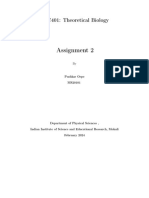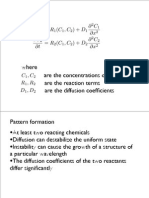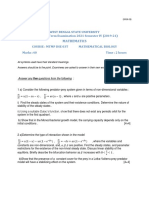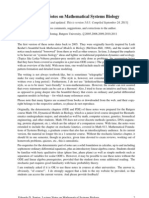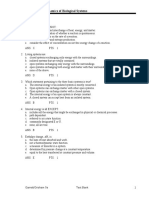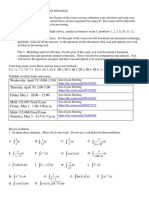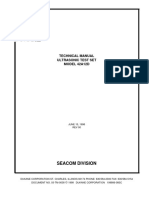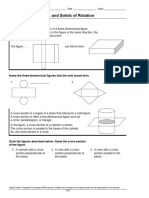0% found this document useful (0 votes)
12 views3 pagesHW 5
The document outlines Homework #5 for AMATH 423/523, focusing on mathematical analysis in biology and medicine, with problems related to feedback control systems, nonlinear chemical reactions, Markov systems, and Michaelis-Menten kinetics. Each problem requires students to derive governing equations, analyze steady states, and explore bifurcations and probabilities. The homework is due on February 23, 2023, at 11:59 pm.
Uploaded by
cepem13540Copyright
© © All Rights Reserved
We take content rights seriously. If you suspect this is your content, claim it here.
Available Formats
Download as PDF, TXT or read online on Scribd
0% found this document useful (0 votes)
12 views3 pagesHW 5
The document outlines Homework #5 for AMATH 423/523, focusing on mathematical analysis in biology and medicine, with problems related to feedback control systems, nonlinear chemical reactions, Markov systems, and Michaelis-Menten kinetics. Each problem requires students to derive governing equations, analyze steady states, and explore bifurcations and probabilities. The homework is due on February 23, 2023, at 11:59 pm.
Uploaded by
cepem13540Copyright
© © All Rights Reserved
We take content rights seriously. If you suspect this is your content, claim it here.
Available Formats
Download as PDF, TXT or read online on Scribd
/ 3







